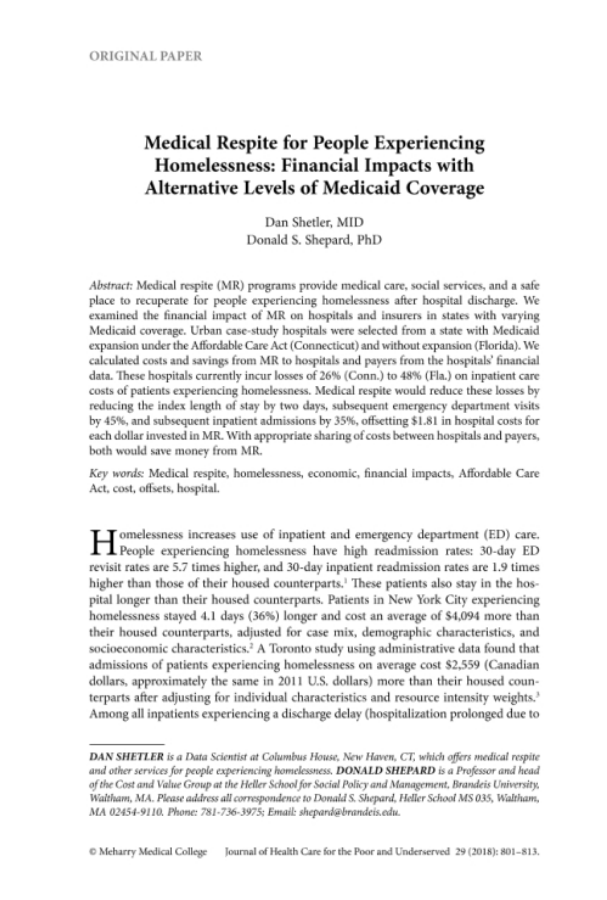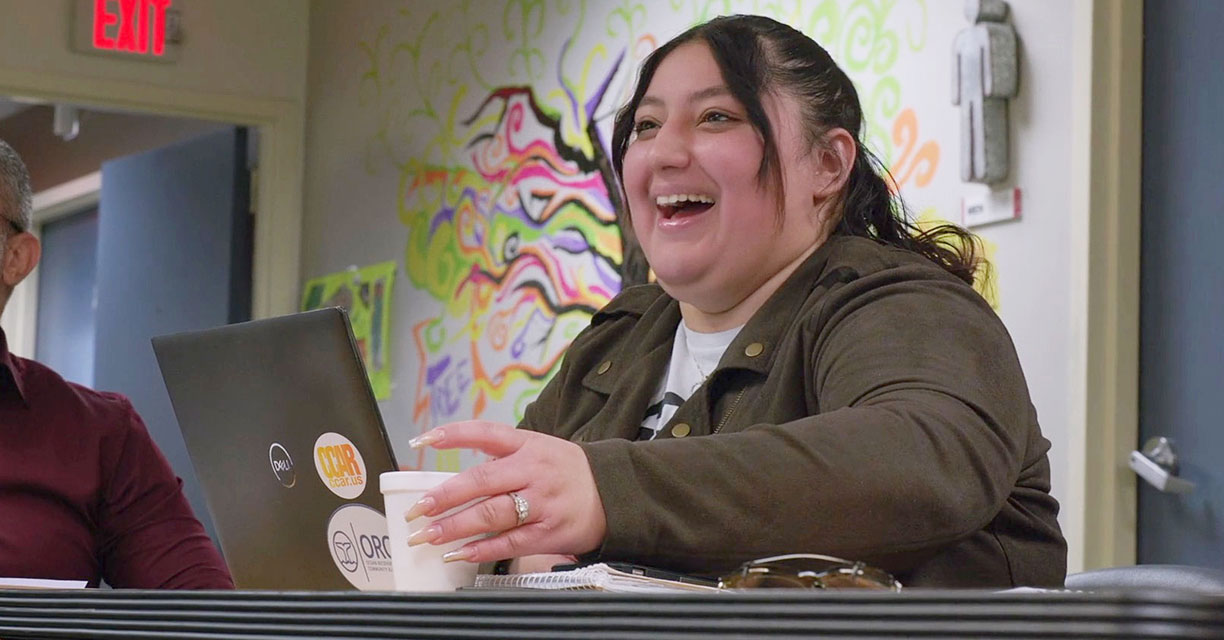Headline
A financial analysis projected that hospitals and health plans could achieve cost savings by investing in medical respite programs.
Context
Hospitals lose money when treating patients experiencing homelessness, who average longer hospital stays than housed patients due to the lack of a stable setting post discharge. Medical respite programs provide medical care and social services in a safe short-term residential setting for people experiencing homelessness easing the transition from acute care for this population. This study projected how medical respite programs may financially impact hospitals and health plans in states both with and without Medicaid expansion, based on financial data from two hospitals.
Findings
Hospitals in a Medicaid expansion state incurred 26 percent losses on inpatient care for people experiencing homelessness, and hospitals in a non-expansion state incurred 48 percent losses. Medical respite programs were projected to reduce the average length of stay by two days, and significantly reduce subsequent acute care utilization. Between reduced losses and cost avoidance, medical respite programs could save approximately $2,000-3,000 per hospitalization for a person experiencing homelessness. When factoring in the costs of medical respite, this analysis projects that each dollar invested in medical respite offsets $1.81 in hospital costs.
Takeaways
Hospitals and health plans can apply this financial analysis of potential cost savings for medical respite, along with other evidence for the positive health and housing outcomes of these programs, when considering investing in medical respite programs for people experiencing homelessness.




